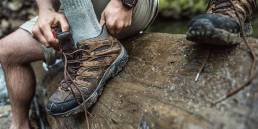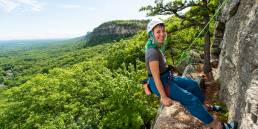Big Cypress National Preserve is a vast expanse of wondrous wildland in southwest Florida that features an astounding diversity of ecosystems, from pine flatwoods, sawgrass prairies and hardwood hammocks to cypress swamps and estuaries, plus bird and wildlife aplenty. The Florida National Scenic Trail threads through this unique landscape and offers winter backpackers a sunny, dry and cool weather experience. With wet feet, of course.
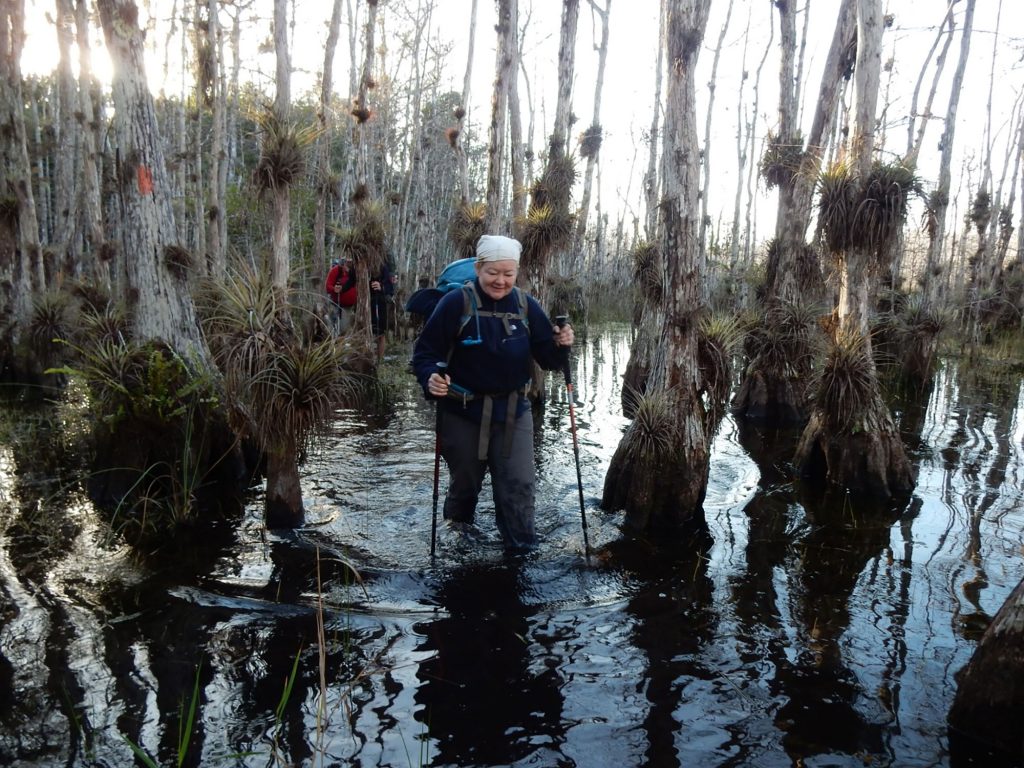
The First Preserve: Big Cypress
Established in 1974, the 729,000-acre Big Cypress National Preserve was the first parkland of its kind in the country, a “preserve” where multiple uses are allowed to co-exist. Once the proposed site of the world’s largest airport, the preserve protects the vital sheet of freshwater that flows naturally from the Big Cypress Swamp into the Everglades and the Ten Thousand Islands, a delicate ecological balance that would have otherwise been devastated.
Hiking through Big Cypress is an experience like no other in the US. The orange blazes of the Florida Trail mark the route, but the “trail” is often under ankle to knee-deep water (deeper in places), sometimes for miles. For the first hiker through the water is crystal clear, but as it gets churned up, the way becomes a gray slurry of thick, shoe-sucking marl that obscures hazardous solution holes in the underlying limestone. Forward progress can be slow and strenuous.
Big Cypress is home to alligators and water moccasins (cottonmouths). The Florida panther roams here, as do black bears. There are river otters and white-tailed deer, too. The Florida Trail Guide offers this cautionary advice to hikers: “Avoid collecting or filtering water on the edge of a body of water between dusk and dawn, when an alligator could mistake your bent-over body or kneeling form for a deer.” Check.
The challenges of backpacking through the Big Cypress Swamp are many, but for well-prepared parties, they make the journey highly rewarding and definitely memorable. Huge blue skies, puffy white clouds, skeletal strands and domes of needleless cypress trees (they’re deciduous) hung with strange-looking clumps of green air plants and miles of solitude mark the hike by day. In the deep quiet of the night, camped under an inky black, star-filled sky on an island of dry ground just inches above the surrounding swamp, the remoteness and wild feel really sinks in.
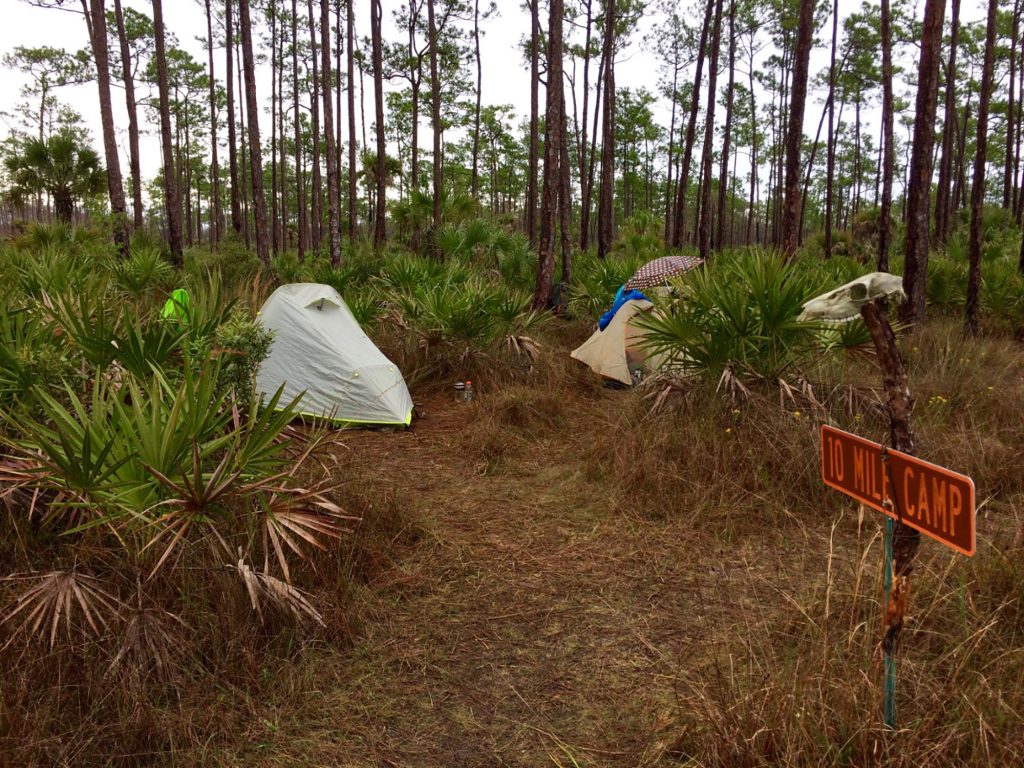
How to Adventure There
The southern terminus of the 1,100-mile Florida National Scenic Trail is at the Oasis Visitor Center on US Route 41 roughly halfway between Miami and Naples. The facility is chock full of interesting information and exhibits, and it’s here that you can get your free backcountry permit. Never mind the alligators in the Tamiami Canal out front; instead, strap on your pack, grab a photo at the official Florida Trail marker and strike off northbound.
It’s a 30-mile hike from Oasis Visitor Center to Interstate 75 (aka Alligator Alley), and along the way you’ll find five campsites. Water can often be obtained from limestone sinkholes in the middle of the cypress domes and from the clear flows in the cypress strands (wade slowly out from trail and camp to avoid muddying the freshwater). Keep a bunch of snacks readily accessible as there are stretches where there’s nowhere dry to stop and rest.
At Interstate 75, there’s a rest area with restrooms, water spigots, picnic tables and—bonus!— a row of vending machines (credit cards accepted). The rest area is a good place to spot a vehicle or call to arrange transportation. It’s a 3-day, 2-night excursion to this point, and if so desired, you can add another day and night by doing the 10-mile loop north of the highway.
Here’s a suggested itinerary:
Day 1: Start from Oasis Visitor Center and wander your way to 10-Mile Camp, where you can pitch your tent under the pines amid golden sawgrass and saw palmettos. Get water from the cypress dome a short distance away. Seven Mile Camp makes a good daytime wayside.
Day 2: Hike to Oak Hill Camp and set up in the brush of the hardwood hammock. Grab water from the cypress strand just north of camp. Take a lunch break at Thirteen Mile Camp.
Day 3: Negotiate the deep water of the “Black Lagoon” en route to Ivy Camp for snacks. Finally, emerge from the swamp and make for the I-75 rest area. Continue on to Nobles Campsite for the night. Find water in the nearby slough.
Day 4: Circle back to I-75 via the Carpenter Loop to complete the hike.
Florida Hikes! and the Florida Trail Guide are essential planning resources for your Big Cypress adventure, while the Far Out navigational app for the Florida Trail is an on-trail must.
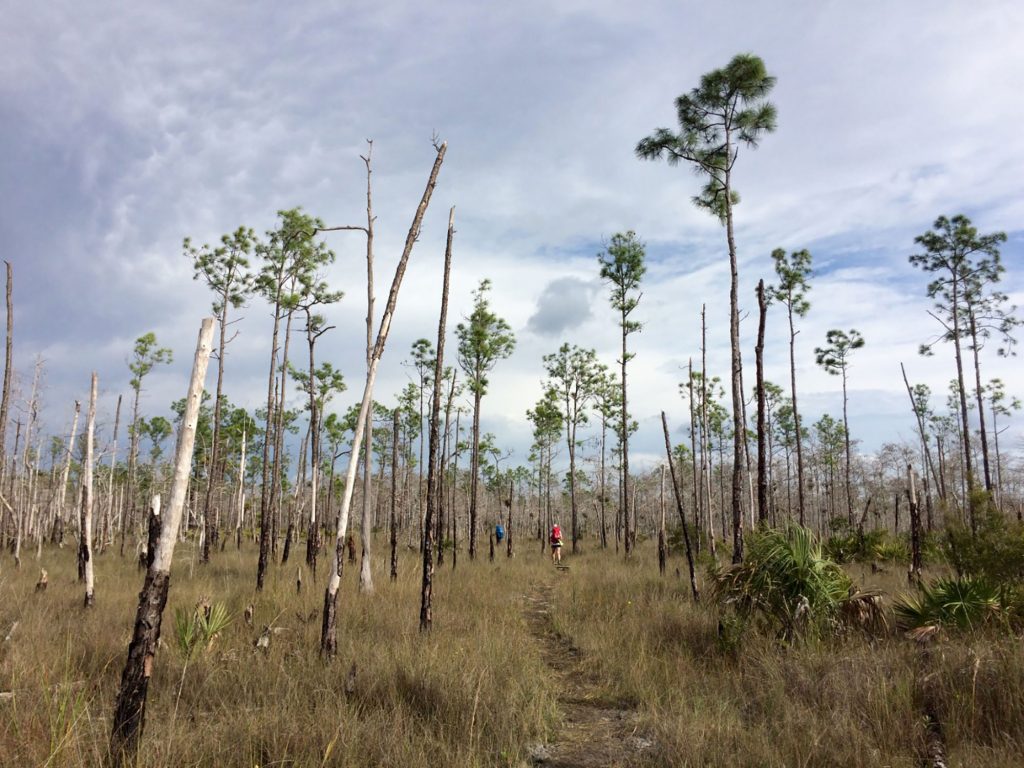
Carey Kish
Carey Kish of Mount Desert Island, Maine is a freelance writer, author of AMC’s Best Day Hikes Along the Maine Coast and editor of the AMC Maine Mountain Guide. His new book, Beer Hiking New England, will be available later this year.
Related Posts
April 24, 2024
What to Bring When Road Tripping with Your Dog
Prepare for the ultimate road trip with…


